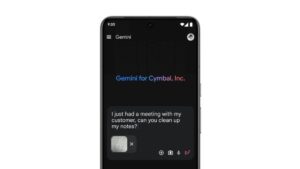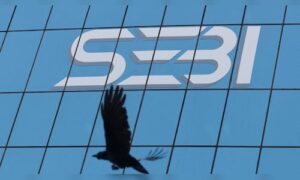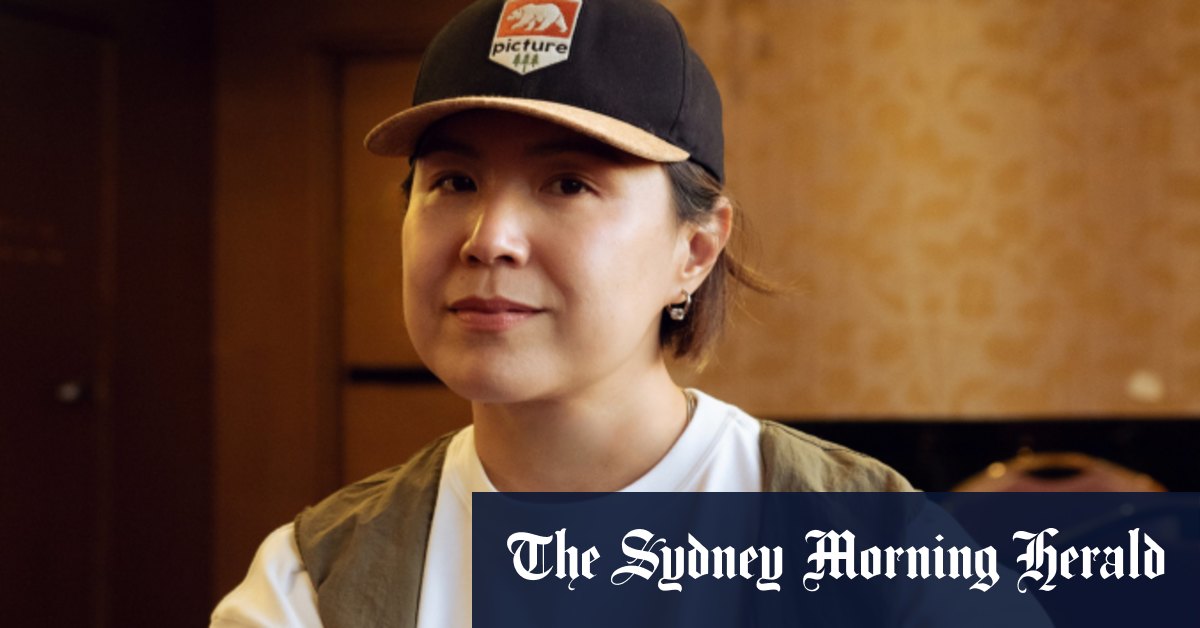
In her decades-long international career, Chinese artist Cao Fei has never had an exhibition as personal as her new show at the Art Gallery of NSW. In it, she explores an aspect of her family history that she hasn’t addressed in her art until now: the migration of her oldest sister, Xiaoyun, from Guangzhou to Sydney in 1998.
“I recently found a lot of letters she sent to my mum and that my mum kept,” Cao tells me via Zoom from Shanghai. “I had never read them and after so many years – more than 20 years – I was quite surprised at how she struggled at the beginning as an immigrant. I found this very touching.”
These letters, as well as family photographs, artefacts and interviews, will feature in a new work, The Golden Wattle, that Cao has made especially for the AGNSW in what is her first major Australian exhibition. “I have never shown this kind of side to an audience, this really personal connection with this land,” she says.
The Golden Wattle is a universal story that will resonate in Australia, where the Chinese-born population is the third-largest migrant community after those of the United Kingdom and India. The work is an “exhibition within an exhibition”, a shrine to Cao’s sister, who was also an artist and died in 2022, aged 50, from cancer. Its title refers to Xiaoyun’s favourite native flower; Xiaoyun’s paintings of golden wattles and other native flora will feature in the installation.

Cao Fei’s Haze and Fog 04, 2013, inkjet print on paper.Credit: Cao Fei/Vitamin Creative Space/Sprüth Magers
When Xiaoyun made the leap to this strange new land, Fei was still a student at the Guangzhou Academy of Fine Arts, absorbed in the act of breaking traditional art forms to give too much thought to how her sister was faring in far-off Sydney. But as often happens in midlife, Fei, now 46, felt the need to delve into the past and reflect on the challenges her sister confronted as a migrant.
“Before she passed away … I had a long interview with her,” Cao says. “I told her it was a special interview, for the show. We had an hour interview, but soon after that call, she went to hospital and we never spoke again … So it’s quite beautiful and sad in this work.”
Although Cao lives in Beijing, she’s on the line from Shanghai where the Museum of Art Pudong is presenting her work in the first solo exhibition dedicated to a female artist since the museum opened in 2021. We’re speaking with the help of her studio assistant, Xu Xiong, who lives in Adelaide and translates her words from Mandarin to English.
The back-and-forth of translation hampers the flow of conversation and there’s a long and serious discussion in Mandarin when I ask whether I can record our conversation but once I’m given the okay Cao responds thoughtfully and extensively to my questions. She seems a little tired, but doesn’t falter for the duration of our almost two-hour interview. The longer we speak, the more she opens up.
A multimedia artist whose work comments on urbanisation, globalisation and the impact of technology on people’s lives, Cao has an extensive international profile and has exhibited at galleries including MoMA PS1 in New York in 2016, the Centre Pompidou in Paris in 2019 (the first Chinese artist to be given a solo exhibition there), and at MAXXI, the national museum of 21st century art in Rome in 2021. She’s had work in the world’s leading biennales and triennials, including three times at the Venice Biennale (2003, 2007, 2015), and twice at the Biennale of Sydney (2006, 2010). Last year, Cao was named one of the most influential people in the global arts, ranked No.10 in the ArtReview journal’s Power 100 list.
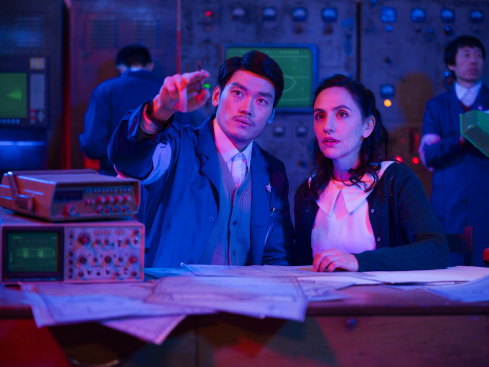
A still from Nova, 2019, single-channel HD video.Credit: Cao Fei/Vitamin Creative Space/Spruth Magers
It’s fitting that her first major Australian exhibition is in Sydney, Guangzhou’s designated sister city. The exhibition’s title – Cao Fei: My City is Yours – plays on that idea and also points to the commonalities between seemingly disparate cities around the world and the humans that inhabit them. The exhibition features works spanning Cao’s career, from her first digital video in 1999, Imbalance 257, a grainy, stream-of-consciousness piece that wowed her art teachers in Guangzhou, to her two new commissions for the AGNSW, The Golden Wattle and Hip Hop Sydney, which also connects with the city’s Chinese diaspora.
Throughout her career, Cao has embraced new technology, picking up a cheap digital camera as a boundary-pushing art student to immersing herself in virtual reality, creating avatars and an entire city on Second Life, the online social world that peaked in the late 2000s. She produces videos, photographs, video games and extensive installations.
Her Sydney exhibition, designed in collaboration with Hong Kong’s Beau Architects, will mimic the structure of a city with various zones, such as a factory zone, a cinema zone and a restaurant zone for which Cao has recreated Sydney’s much loved and now closed yum cha restaurant the Marigold, including salvaged chandeliers, dim sum trolley carts and lazy Susans.
“I like new media, and sometimes I like old media,” Cao says. “For me, it’s not about whether a medium is old or new, but how it will be used for different subjects.”
As an artist, she’s drawn to abandoned urban spaces and the memories and stories that linger. The lives of ordinary workers is another recurring theme and was the subject of the artwork that launched Cao onto the international stage in 2006. Titled Whose Utopia, the 20-minute video is set in an Osram light-bulb factory in the Pearl River Delta. As workers sit at their stations, heads bowed over their fiddly work, a young woman in a tutu and angel wings dances en pointe among them; another woman in a long white ball gown walks down a narrow warehouse corridor, shelves towering either side of her, performing delicate dance moves and hand gestures; and a middle-aged man practises mime on the factory floor, while younger men play out their fantasies of being rock stars. These melancholy images move to a slow, sombre score.
Asia One, from 2018, commissioned by the Guggenheim Museum, is considered a sequel to Whose Utopia. Here, the nature of work has changed dramatically: in a vast automated warehouse, there are only two human workers – a man and a woman (with a barcode tattooed on her wrist). Their co-worker is a cute AI robot. Once again a sense of yearning pervades the work; the humans seem vulnerable, wistful, forlorn as they inhabit a hollow world of conveyor belts rolling with cardboard packages and floor-to-ceiling industrial shelves crammed with even more packages.
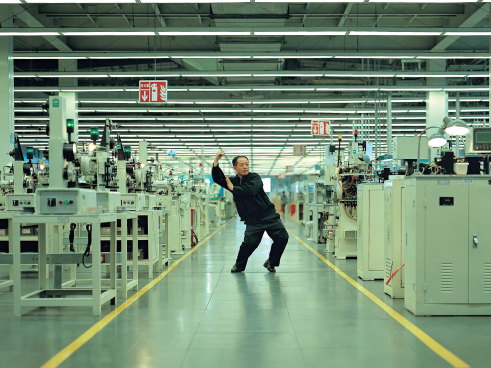
Whose Utopia, 2006, single-channel video.Credit: Cao Fei/Vitamin Creative Space/Spruth Magers
“Whose Utopia reflects the booming manufacturing industry in China at that time to serve globalisation and on the other hand Asia One shows the rise of new industry, digital commerce,” Cao says. “As individuals, we are all a subject of consumerism; we either need to work to provide a service or receive a service and in the era of automation we need to think about how automation might replace jobs. As an artist, I think my work is to witness the change and record the change. In the past in China workers were glorified, they were considered a very important part of society. Now the glory doesn’t seem to be there any more, and we all need to think about what our future will be.”
She hastens to add: “It’s not just in China that the glorification of the worker has disappeared, it’s a global phenomenon. In the past in many places the worker was valued, was rewarded, and now with technological development, it seems like humans and the workers are secondary.”
However, Cao doesn’t take a purely critical view of technology – her works are not judgments. “I’m trying to explore possibilities for co-existence,” she says. “In my life I wonder whether I’ll be able to see how the value of people could change, so they are not just purely valued as workers. Is there a new value to people that can be outside of work? It could be something else and so I have an open mind for that.“

Asia One, 2018, single-channel HD video.Credit: Cao Fei/Vitamin Creative Space/Spruth Magers
Cao was born in 1978, the same year that Chairman Deng Xiaoping ushered in sweeping changes for China, with his policies of reform and opening-up spurring rapid urbanisation and technological advances. Cao’s parents were both artists and sculptors; her father made portrait statues of Chinese leaders, including Deng Xiaoping. The family lived at the Guangzhou Academy of Fine Arts, where Cao’s parents taught, and she grew up surrounded by art.
“Guangzhou was quite a pioneering city at that time,” Cao says. “There were a lot of new opportunities and one important memory I have at that time in the academy was being able to access a lot of western culture in the library. I could read catalogues of modern art from the west, like Picasso, Dali and Magritte, so that’s quite a rare opportunity, and later on I got exposed to not just western modern art but also pop culture.”
Now Cao finds herself sharing top billing with Magritte over summer at the AGNSW, a pairing that amuses her, and that is not as unusual as it may at first seem. A surrealist streak runs through Cao’s work. She highlights the odd and incongruous, such as cosplayers in bizarre outfits at combat in the bleak urban landscapes of Guangzhou, with fake animals representing nature displaced by urban sprawl.
Loading
Cao’s other new commission for the AGNSW, Hip Hop Sydney, also has an element of the absurd. It features 60 ordinary people, from the age of nine to 90, performing hip-hop on the streets of the city’s Chinatowns in Haymarket and Burwood, as well as at the Sydney Opera House. The work reprises a project Cao began more than 20 years ago, when she made Hip Hop Guangzhou on the streets of her hometown, filming labourers, cleaners, police and more. The work reclaims hip-hop for the masses, returns it to the street as a form of joyous release or gentle rebellion, open to anyone, regardless of age or ability. She followed it up with Hip Hop Fukuoka (2005) and Hip Hop New York (2006).
“It’s a very surprising opportunity for me to make Hip Hop Sydney, because I already thought the Hip Hop series was finished,” she says.
Cao filmed Hip Hop Sydney during three intense days. I tell her that if someone approached me on the street, I’d have no idea how to do hip-hop. Dance instructors were on hand to help people, she says, and she herself is an enthusiastic practitioner.
“I loved street dancing when I was a teenager and in recent years I resumed this passion again, so I connect my teenage passion with my middle-aged body now. Hip-hop is part of me, in my body, and also I have a lot of dance elements in my work, throughout my artistic career.”
I ask how her two teenage children feel about their hip-hop dancing mum. This time she answers directly in English. “They got used to it,” she says with a smile. “They think Cao Fei is like a crazy mum artist. They are more calm than her.”
Cao Fei: My City is Yours is at the Art Gallery of New South Wales from November 30 to April 13, 2025. She will be in conversation with the AGNSW’s film curator Ruby Arrowsmith-Todd on Saturday at 12pm (in English) and 1pm (in Mandarin).
To read more from Spectrum, visit our page here


